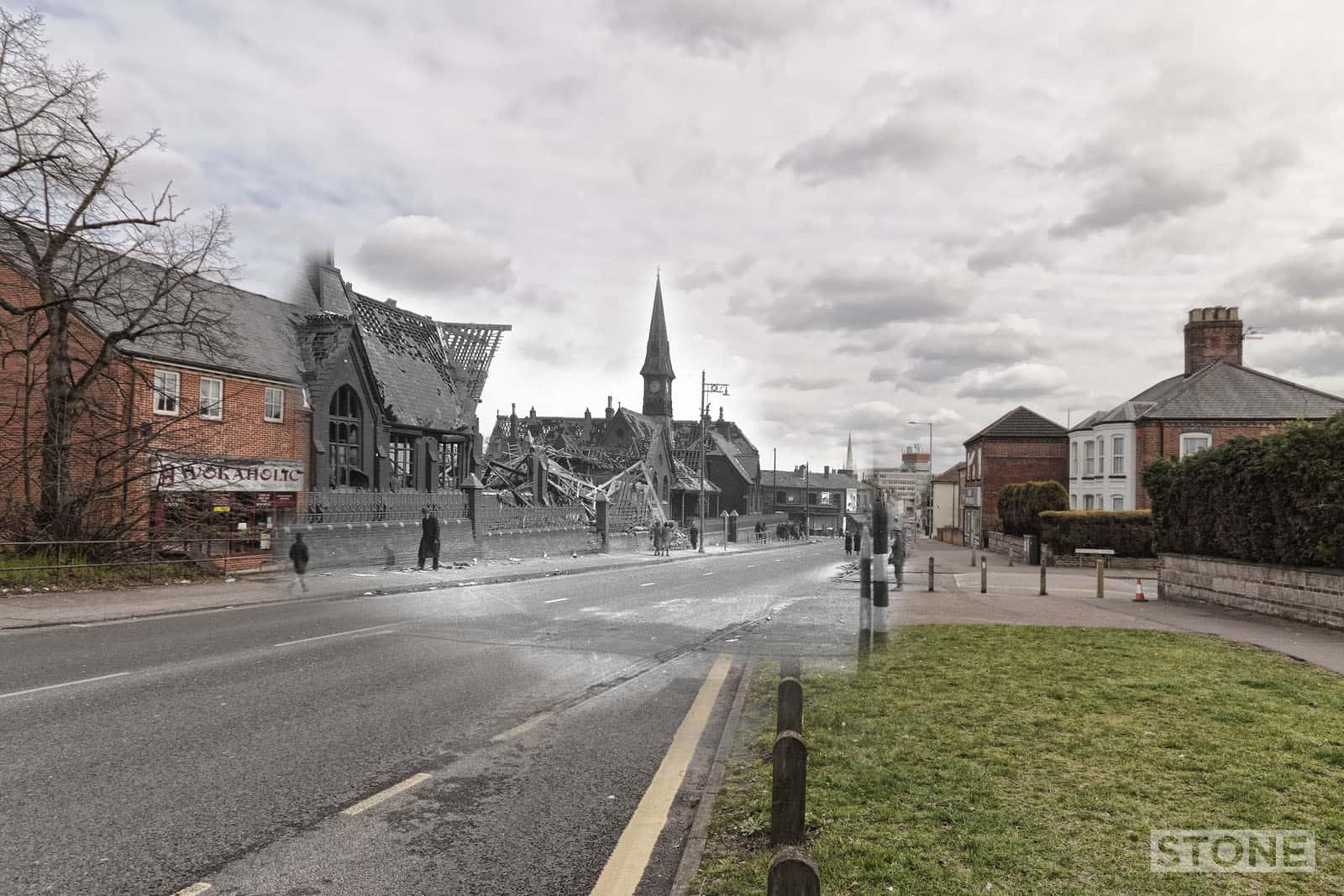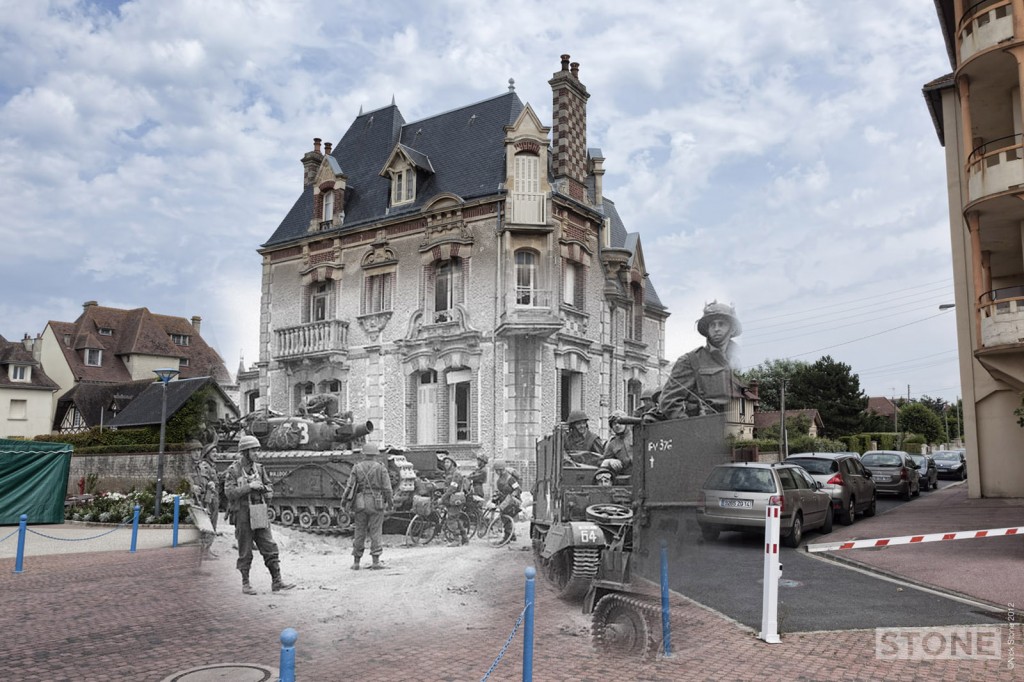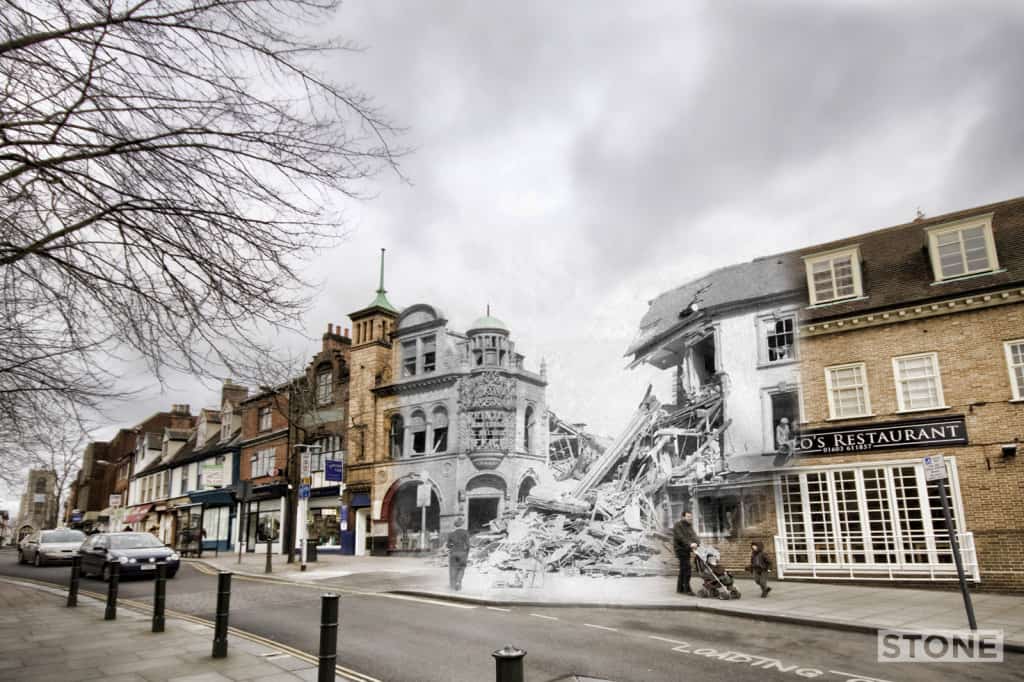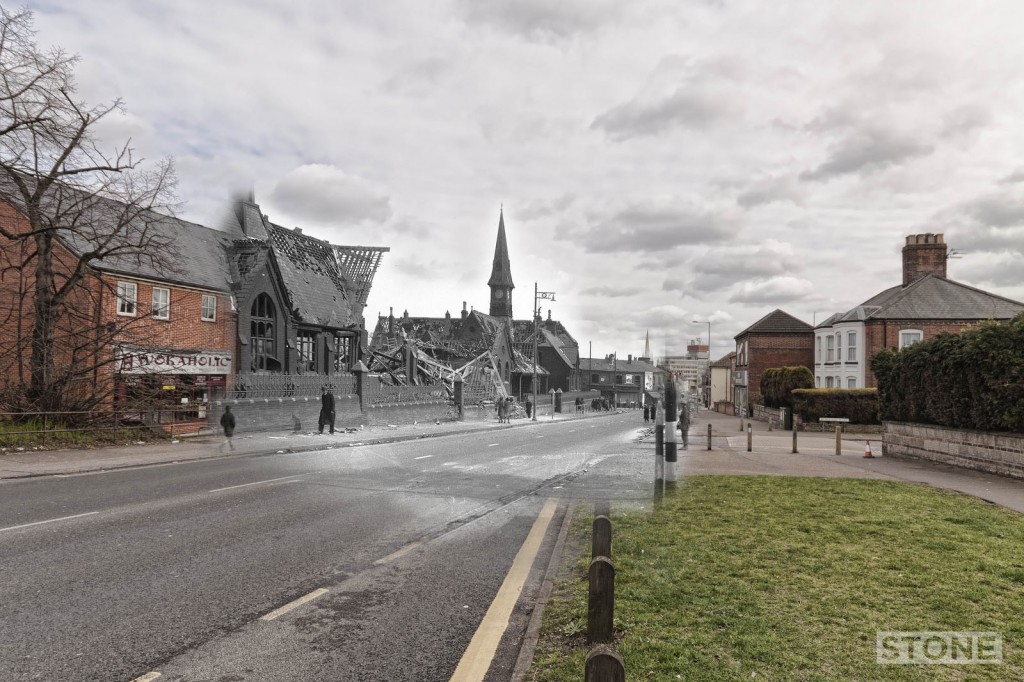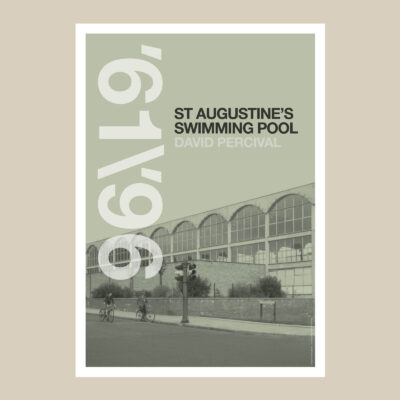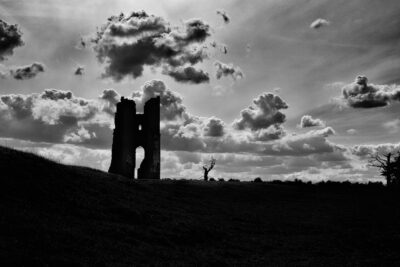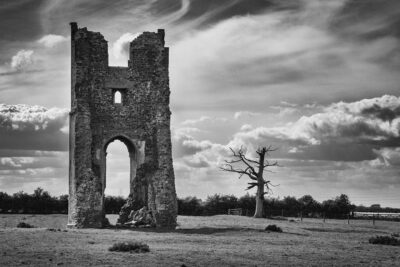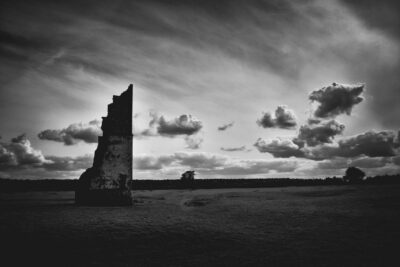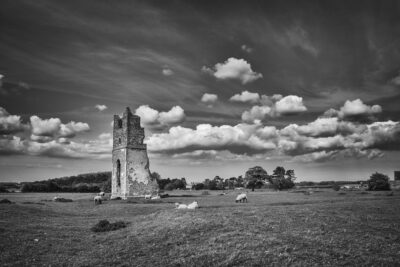I should of course have done a piece on the Ghosts stuff properly ages ago, but time passes and what one minute seems to be the important and interesting bit of whatever you’re doing suddenly isn’t as much as it was three or four years ago. The recent conservation of the Bomb map; a large piece of crispy, old and fascinating paper which records where all the bombs dropped on Norwich during WW2 has enlivened interest in The Raids on Norwich again and I’ve started getting calls and emails about the collection of images I made, including questions like; will I be extending it? will there be a book? are common ones, doubtless there will be some tomorrow like; Why didn’t you brush your hair before being filmed by the BBC? and Did you have boiled egg for breakfast, because that’s what that stain on your shirt looked like? Well I didn’t get much warning that they were going to do it is the answer, I never brush my hair and only had a cup of tea.
Yes there are more I could do in all probability, there are also plenty I can’t because I can’t stand inside trees or there’s a wall in the way. I also now have access to a new set of George Swain photos which are from a private collection which my friend and fellow obsessive Steve Smith chanced upon, many are familiar, some I already have as prints in my private collection of Norwich Blitz photos acquired over many years of junk shop and ebay combing, with donations from some individuals too, some excitingly aren’t, they’re new. It is a case of finding the time and head space to fit it in in a brain that is already running off and looking at other new things or old things and I actually think the collection of old stuff warrants a site of it’s own with the ghosts as a sideline. In fact I think the original photos plus all the various bits and bobs I’ve seen, including some hideous bits of shrapnel, letters and ephemera, gas masks, badges and ration books actually deserve a museum all of their own in the city, something I’d not very secretly like to work towards if I ever find the time.
I also find myself looking at the parlour trick itself and how much ghosting history there is about now and sometimes wonder if it’s worthwhile doing any it more, there are ghosts of everything. When I started I could count the number of people doing Ghosting/rephotography on the fingers of one Norfolk hand, I believe there were five of us, so I even had a finger left over. I’ve always credited Sergei Larenkov with being my main source of inspiration pointed out to me by Tony Burge, Larenkov was the first person’s work I’d seen using this technique, almost simultaneously Jo Hedwig Von Teuwisse began her Ghosts of History output, both out there in the wider European playground of Second World War history. There is also I’ve since discovered the grandaddy of it all Seth Taras, who created adverts for the History Channel in 2004. The technique was of course in existence in one form or another long before that as “Then and Now” photos and genuine Rephotography, one particularly good example is After the Battle. which has been comparing historic sites since I don’t know when. It is of course true that we’ve been creating weird effects and double exposures with enlargers in darkrooms more or less from the inception of the photography, maybe not Fox Talbot or Daguerre, but not that much later Victorians where dicking about with pretend ectoplasm and rudimentary double exposures. The Cottingly fairies were a similar trick and with the various criticisms of photoshop trickery and over-processing that exist it’s easy to forget that it’s been done for a long time. Frank Hurley fairly regularly comped images together specifically some of his Great War battlescapes which often involved replacing a burnt out sky with another with texture, or adding aircraft and cloud to a sky over an attack. He understood how adding drama can change the way that an audience connects, increasing the dynamism of an image. This is less, but the same.
Since the resurgence and the interest in this little trick of ours, I’ve seen hundreds of really clever variations on the idea from High school basket ball in the US, to album buy soma carisoprodol online sleeves, transport, right up to put people in a picture with themselves as kids, the Blitz has been covered in Bath and Liverpool to name but two, Liverpool twice once by Neil Holmes and secondly by the Broader Liverpool Then and Now on Facebook, there’s also some of London, Stu McPherson locally has produced M&GN ghosts, I did some Great War ones which proved to be challenging in a ‘here’s a picture of some mud, now stick it on a picture of some mud’, plus Norwich Ghosts – based more around the inter-war and post-war periods in Norwich and both I and Carol at Broadland Memories have jaunted off around the county doing. Carol’s are Broadland-ish, mine were market town-ish and included a dupe which was interesting. There’s even Gary Mcleod running “Rechallenger” whilst trying to use his cat herding skills to catalogue all of it into a database. There’s at least two smartphone apps and History Pin online all doing similar things with old and new, making it accessible to anyone who’s willing to have a crack at it (who doesn’t mind potentially falling foul of some fairly sticky copyright that most of us who dabble in it have gradually become aware of). So what you do melds into an ocean of similar people excited by the realisation that it’s not rocket surgery and it’s fun and engaging too and works with audiences.
This morning I was asked what the attraction is for the viewer of creating ghosts of history? why is it such a popular thing? well, erm, lots of things; it gives history an immediacy, it’s easy to understand and decode a place if you can see where it actually is and what was there. This is also an attention span thing; these are very quick History-bites, visual arts and imaging gives people a very quick cheap history thrill-pill that easy fix so it’s idea for sharing via social-media where a stream can whip past so fast you barely register the 140 characters. It’s something that the Heritage Sector and the Museums Service have cottoned on to and commissioned pieces are a reality as it’s a very effective way of showing someone what was where and when in this multiple layered timescape we live through. And of course it’s a bit kooky and weird and spooky, and people like that kind of thing generally. I’ve had a couple of people comment that ghosting dumbs down history, couldn’t agree less, it makes history accessible in a way that it perhaps wasn’t as obviously before and I’m all for that, if something can make an audience more engaged in what has been and how it relates to the instant then that’s a good thing isn’t it? if they then actively take an interest in history, and indeed their place in the scheme of things, then we’ve all won a little bit. It almost reminds me of the art of dioramas, I miss them, my fascination with the ‘cavemen’ in Grimes Graves in the depths of Norwich Castle in the 1970s their plaster bleeding in the dim light.
The history and story of your own family is a good place to start, we nearly all have faded family photos, and the stories that go with them, however mundane they may appear to be it’s quite often that normality that makes them fascinating, if showing people an old photo stuck on top of a new photo can be used as a tool to understand where they live and what their family who lived their before them lived through even if it is an incident or time period where history bunches up and gets all thick and gooey like during the Second World War then there again we have winners and in those stories and photos are shared then we all gain a greater understanding of society and how it works not just upstairs in the big house which personally I think culturally gets quite enough coverage, but downstairs where most of us live, in the shoe factories, at the docks, in the terraces and on the terraces. So lets hope it continues and develops as a technique, I will almost certainly be continuing it in one form or another, particularly where the past touches the surface of the present during the anniversaries of Normandy and the Great War and in my own home area.
You can find the rest of my Ghost work here.

